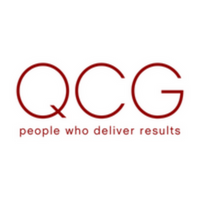Gender pay – why the hard yards are still ahead of us

McKinsey’s recent Women in the Workplace 2019 report concluded that there is a growing acceptance that a more diverse Board adds value, with some bright spots. Although it also found that more women than men see the importance of this!
In addition, the study found that senior leaders’ accountability for diversity, sponsorship of women and flexible working are all helping. However, it does seem that progress is beginning to plateau. It seems that making a commitment to address issues goes only as far as doing the easy stuff, let’s see.
The key conclusion to come out of the report is that companies need to focus efforts much earlier in the pipeline. Despite some good progress in numbers of women in executive positions (21% up from 17% – a bright spot!?), attitudes towards equality and representation of women (and those of colour) at managerial level are stagnant.
They conclude that with fewer women (than men) being promoted to manager there is a broken rung on the ladder when it comes to making progress – and so a key goal for businesses should be getting more women into managerial positions. Good point.
Other factors at play
As has historically been the case with career progression more generally, it seems inequality is hitting the concrete sponge of middle management – perhaps there is something in the name!
Other contemporary research has also shown challenges earlier in the pipeline, with social norms in the home and at school feeding through to companies hiring decisions. The former is not in the hands of businesses but the latter is – and changing.
Looking at industry specific data, we can still see transport (eg pilots v cabin crew), medicine (doctors v nurses) and financial services as the stand out sectors with the greatest gaps.
Finally, Caroline Criado Perez’s FT 2019 business book of the year ‘Invisible Women’ exposes – inter alia – the extent to which the collection and analysis of data acts as a silent discriminator. This helps to show that it’s not just HR in the spotlight.
A joined-up approach to talent management
A brighter spot at a more basic level is that almost all our clients are spending more time looking at equal pay within their grades or pay levels. What is worrying is that while (gender) pay sits with reward leaders, the root of the problem sits with those managing the talent pipeline.
But the simple point is that hard, long-term cultural challenges often will plateau after the easy bits are done. The hard yards are still ahead of us. More joined-up talent management and reward would be a great first step. HR (with business leaders’ support) having greater influence in core business activities would be a further and major step forward.
The author is Alan Hurst, managing director at QCG.
This article is provided by QCG.
In partnership with QCG Ltd
QCG provide expert and friendly consultancy on fair pay, effective recognition and a great employee experience.







